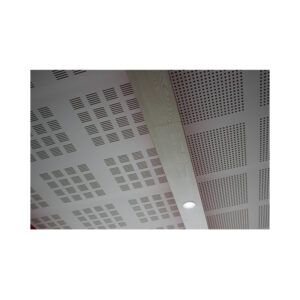Introduction
Acoustic ceilings play a vital role in creating comfortable and productive environments by controlling sound levels and improving acoustics. When selecting and installing acoustic ceilings in various settings like offices, schools, or healthcare facilities, it is important to consider specific factors that can optimize their performance. In this article, we will explore the key considerations that should be taken into account for choosing and installing acoustic ceilings in different environments, providing valuable insights for architects, facility managers, and building owners.
Sound Absorption Requirements
Different environments have varying sound absorption requirements. Consider the following factors:
a. Office Environments: In open office spaces where speech intelligibility is important, acoustic ceilings with high sound absorption properties can help reduce noise distractions and enhance communication.
b. Educational Facilities: Classrooms and lecture halls require good speech intelligibility and reduced reverberation. Acoustic ceilings with high sound absorption capabilities can improve learning environments by minimizing echo and improving clarity of speech.
c. Healthcare Facilities: In healthcare settings, privacy and speech confidentiality are crucial. Acoustic ceilings with excellent sound absorption can help maintain confidentiality and reduce the transmission of sound between rooms.
Sound Insulation Needs
In some environments, sound insulation is essential to prevent the transmission of noise between different areas. Consider the following factors:
a. Office Environments: Private offices or meeting rooms require sound insulation to ensure confidentiality. Acoustic ceilings with good sound insulation properties can help maintain privacy and reduce noise disturbances.
b. Educational Facilities: Music rooms or auditoriums may require soundproofing to prevent sound leakage. Acoustic ceilings with high sound insulation capabilities can minimize sound transmission and enhance the quality of performances.
c. Healthcare Facilities: Areas such as patient rooms or examination rooms require sound isolation to ensure patient comfort and privacy. Acoustic ceilings with effective sound insulation can help create a peaceful and confidential environment.
Aesthetic Considerations
While addressing acoustic needs, it is important to choose acoustic ceilings that align with the overall design aesthetic of the space. Consider the following factors:
a. Office Environments: Opt for acoustic ceilings that offer a range of design options, including various colors, patterns, and finishes. This allows integration with the overall office design while providing sound control.
b. Educational Facilities: Choose acoustic ceilings that create a visually appealing and stimulating learning environment. Consider ceilings with creative designs, vibrant colors, or educational graphics.
c. Healthcare Facilities: Select acoustic ceilings that promote a calm and healing environment. Soft colors, natural finishes, and seamless designs can contribute to a soothing atmosphere.
Maintenance and Cleanliness
Consider the ease of maintenance and cleanliness requirements in different environments:
a. Office Environments: Choose acoustic ceilings that are easy to clean and maintain, as office spaces often require regular cleaning and upkeep.
b. Educational Facilities: Opt for acoustic ceilings that are resistant to staining and can be easily cleaned. This helps maintain a hygienic learning environment.
c. Healthcare Facilities: Select acoustic ceilings that meet stringent cleanliness standards and can withstand regular cleaning and disinfection protocols.
Conclusion
When selecting and installing acoustic ceilings in different environments such as offices, schools, or healthcare facilities, it is crucial to consider factors like sound absorption requirements, sound insulation needs, aesthetic considerations, and maintenance requirements. By carefully evaluating these considerations, architects, facility managers, and building owners can choose the most suitable acoustic ceilings that effectively enhance the acoustic performance of the space while meeting the specific needs of the environment.



